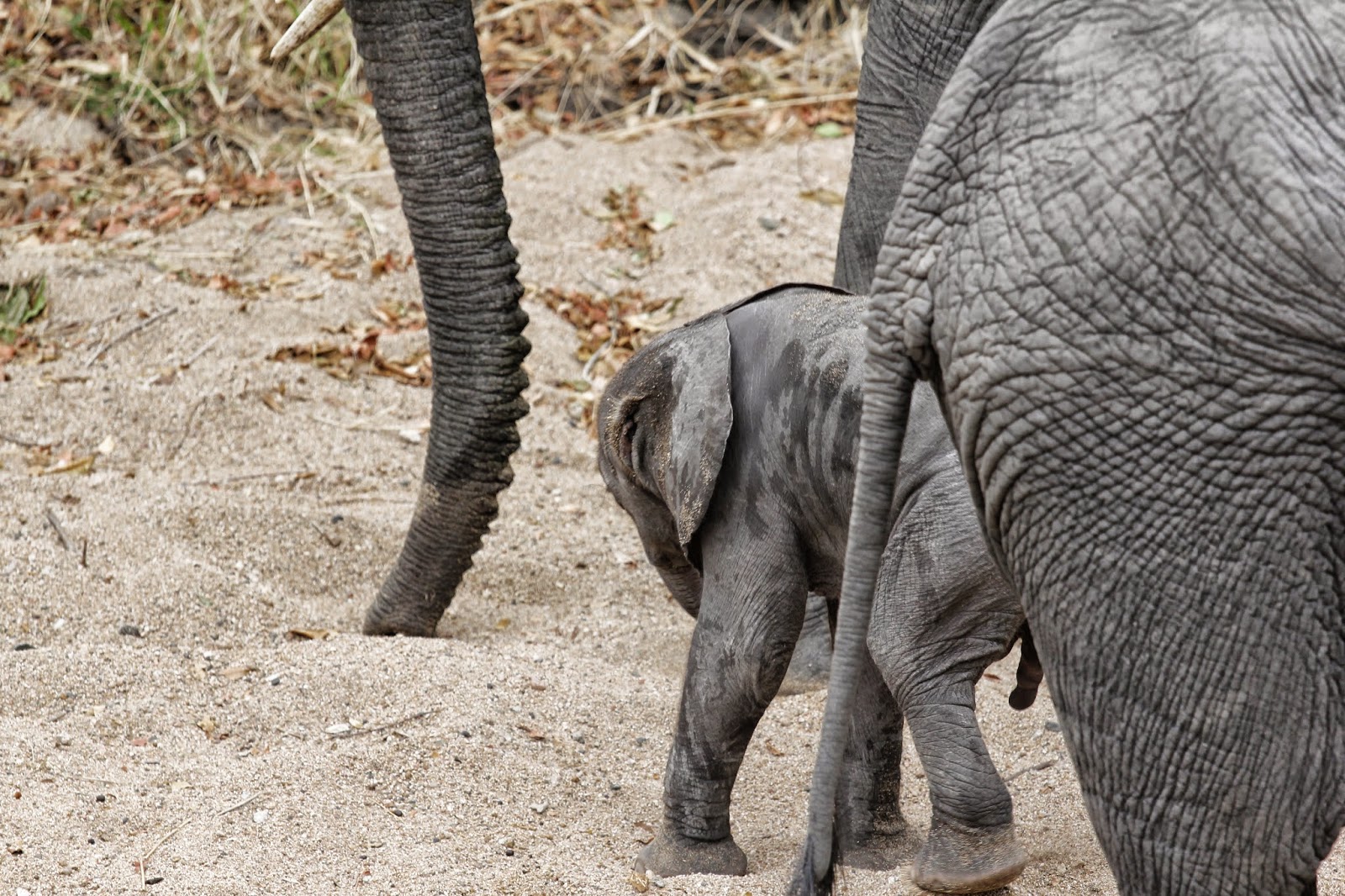 |
| Sunset at the dam, which was really more of a puddle - end of dry season |
 |
| Lesser Bushbaby peeping out from the roof - photo Rod Bell |
As usual the ANT team laid on a full weekend’s entertainment, very different from our usual course weekends, with four teams and four very different activities.
It was fantastic to meet students past and present, and share information and ideas - a great way to learn and make new friends.
Most participants arrived on Friday evening and, after a leisurely walk round the farm, we settled in to watch ‘Bush TV’ with a difference.
Not only did we have a lovely fire burning, but wagers were exchanged as to what time the resident Lesser Bush Babies (Galago moholi) would emerge from their roost under the thatch of the lapa.
 |
| Watching bush tv! |
It was great fun watching them (watching us!) and eventually by 18:35, they had all emerged and disappeared into the surrounding trees to forage.
Saturday morning started early with practical tracking. We tracked the usual suspects and even found the spoor of a few specials, including Puff Adder, Brown Hyaena and African Civet (including pastings).
For me, though, the highlight had to be the fresh Water Monitor spoor we found at the dam. It was so fresh, even impressions of the scales on the reptile’s foot were visible!
 |
| Andre found a grasshopper and showed us the tracks they make! |
 |
| Fresh Water Monitor track with scales visible |
 |
| Puff Adder track, with diagnostic 'tail drag' through the middle |
 We also had a chance to identify André Veenstra’s collection of indigenous bonsai trees.
We also had a chance to identify André Veenstra’s collection of indigenous bonsai trees. I must admit that the miniatures were far trickier to identify than their grown-up cousins. Just shows how much we rely on the 'jizz' (GISS) of the tree for identification purposes!
After a long siesta we headed out on an interpretive walk. The brief was for each team to use their knowledge of the medicinal uses of indigenous plants in order to find a cure for Ebola using various plants found on Andanté. So, with books in hand, we started to research and find specimens for our various remedies.
 |
| Doc 'shake-shake' Veenstra in action, shaking those bones |
At sunset we strolled back to the Lapa and enjoyed a lovely evening round the fire sharing bush stories, with some reminiscing a little longer than others!
 |
| Birders putting their skills into practice |
We then met back at the Lapa for a team quiz challenge. Nicky certainly outdid herself here, creating a quiz with three sections (trees, spoor & birds) that encouraged great debate between team members and some serious searching of the ‘grey matter’ for answers. The Nyala team were ultimately victorious with 30 points!
 |
| Boil-treating the seeds that had been collected |
Hopefully his tuition will enable us to propagate our own little indigenous bonsai trees.
 |
| Adding seeds and potting soil to seedling trays |
So, make a note in your diaries now for the ‘2015 ANT Refresher Course’ which is set for the weekend of 10th and 11th October 2015. Book early to avoid disappointment!
The ANT Blog
(With grateful thanks for text and images to Jenny and Rod Bell)
 |
| Students doing a bit of revision on identifying trees |
 |
| The Puzzle Bush (Ehretia rigida) in flower - gorgeous sight! |
 |
| Camphor Bush (Tarchonanthus camphoratus) - we tried, this time unsuccessfully, to light our fire using the flowers, but decided in the end that they simply weren't dry enough! |
 |
| From left to right: Anne, Kevin, Carla, Andre, Jason, Gert and Pat |
 |
| Monique and Sabine posing with the star of the show! |
 |
| Is that an African Pipit? |
 |
| Purse-like nest of a Grey Penduline-Tit |
 |
| Dave and Carla set off with their group on a bird walk |





























